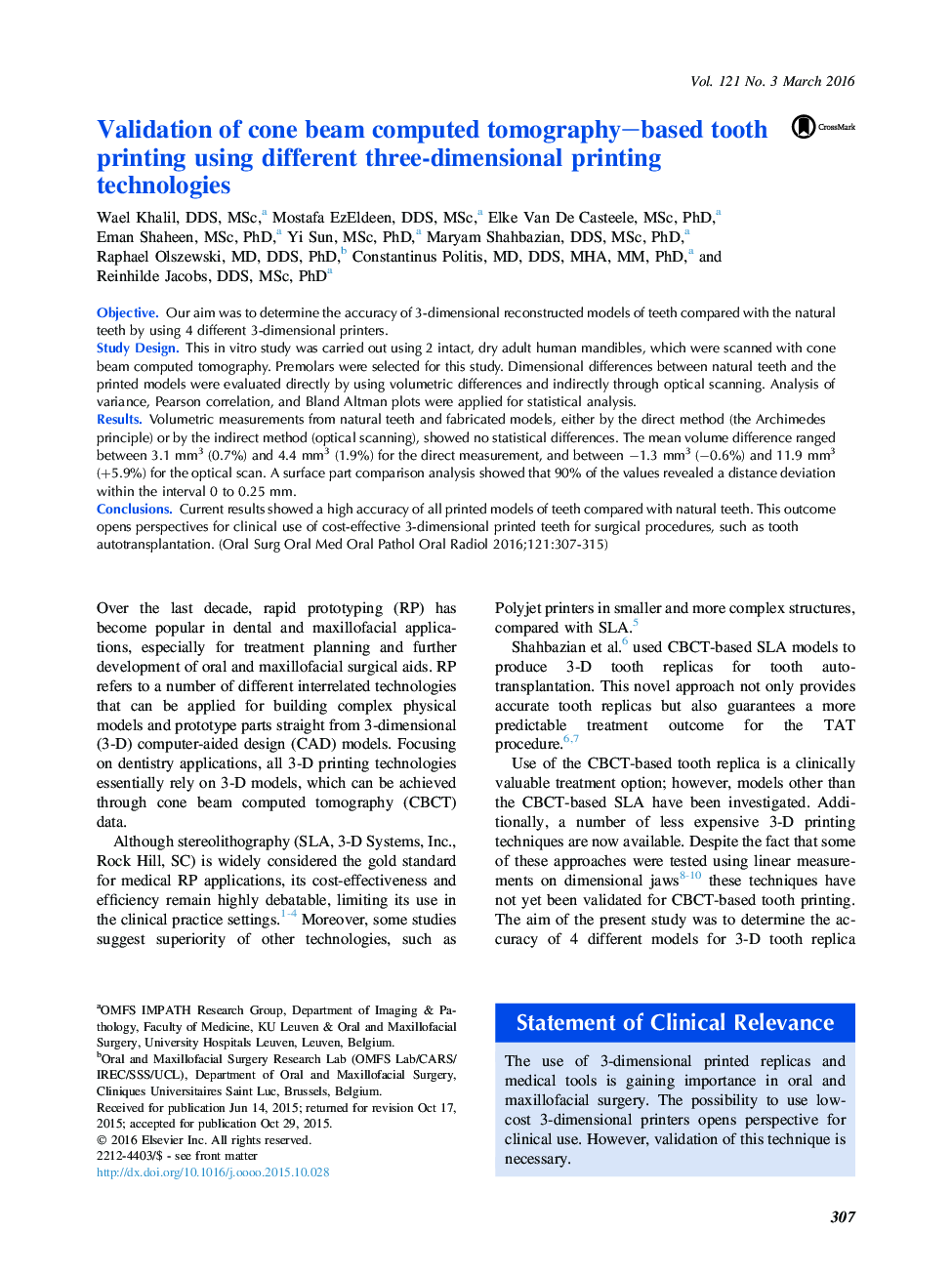| Article ID | Journal | Published Year | Pages | File Type |
|---|---|---|---|---|
| 3166442 | Oral Surgery, Oral Medicine, Oral Pathology and Oral Radiology | 2016 | 9 Pages |
ObjectiveOur aim was to determine the accuracy of 3-dimensional reconstructed models of teeth compared with the natural teeth by using 4 different 3-dimensional printers.Study DesignThis in vitro study was carried out using 2 intact, dry adult human mandibles, which were scanned with cone beam computed tomography. Premolars were selected for this study. Dimensional differences between natural teeth and the printed models were evaluated directly by using volumetric differences and indirectly through optical scanning. Analysis of variance, Pearson correlation, and Bland Altman plots were applied for statistical analysis.ResultsVolumetric measurements from natural teeth and fabricated models, either by the direct method (the Archimedes principle) or by the indirect method (optical scanning), showed no statistical differences. The mean volume difference ranged between 3.1 mm3 (0.7%) and 4.4 mm3 (1.9%) for the direct measurement, and between −1.3 mm3 (−0.6%) and 11.9 mm3 (+5.9%) for the optical scan. A surface part comparison analysis showed that 90% of the values revealed a distance deviation within the interval 0 to 0.25 mm.ConclusionsCurrent results showed a high accuracy of all printed models of teeth compared with natural teeth. This outcome opens perspectives for clinical use of cost-effective 3-dimensional printed teeth for surgical procedures, such as tooth autotransplantation.
